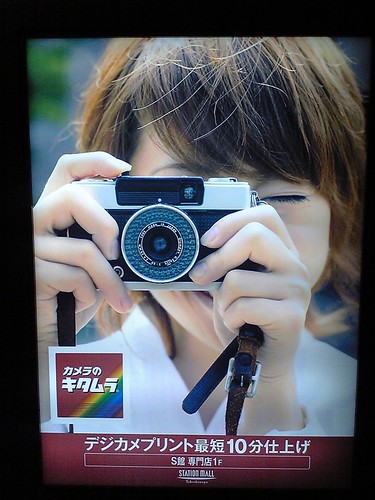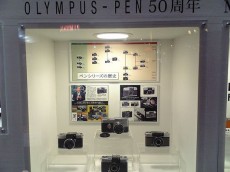
If you had asked me about the importance of my camera’s appearance ten years ago, I would have probably laughed at you. As we know, most photographers are technically-minded people; they have to be. The camera is our primary tool to work the technical medium of photography and generally speaking people need tools to work well, and not look good.
In the past all I cared for were functionality and features. And more features. And if a camera with ‘better’ functionality came along, well, it seemed time to think about upgrading. And that was even before the age of digital and its unprecedented accelerated pace of technological evolution.
Nowadays when looking at a camera I always look for the C Feature first: does it have a sufficient amount of on-board charm for me to bother trying to commence a productive relationship with it? Is it possible to add or enhance that feature, perhaps with a nice case or strap?
Just how did I get to the stage where this aspect was worthy any consideration by me? Perhaps I am getting older (inevitably a viable explanation for many odd preferences) and consequently less interested in the rational characteristics of such things. But more importantly over time I have finally realized that, like almost everything in life, photography is a mind game: if you kept your mind in the right frame as it were, the good photographic ones should follow not too far behind.
The first time I became conscious of this was when starting out with street photography several years ago and after a while switching to a Leica camera. I remember walking out of the shop thinking “What have I done? So much money spent on a camera without any features!” But soon after everything would suddenly be different. Me and this machine seemed to get on well, very well. Obviously, this is just a trick of the mind as the Leica does the same (in fact, probably a lot less!) than most 35mm cameras would do, and exactly the same what your Nikon, Canon etc. does for you. Nonetheless I felt different about taking photos with it and, in my view, produced better work than before. What usually happens next is that you try convincing others to make the same choice as you did. Attempting this would ignore the important distinction that this was only the right choice for yourself and only at that point in time. It is likely to be totally different for others (or for myself at an earlier or later stage) so we should not bother evangelizing, although I am as guilty as anyone.

Many readers of Japan Exposures are enjoying John Sypal’s Tokyo Camera Style, also accessible via our front page (or look to the right in the sidebar), where you can see several examples of cameras that Tokyo photographers have chosen to go out and take pictures with. It is a fascinating sight and probably unique in the world. Where else would you see such camera diversity “in the wild”? What catches your eye, however, are that very often these are cameras with personality – yes, there is such a thing. Because why, if not for The C Feature, would you chose something older or different from the current mainstream? A cynic would say that that fine cameras have been demoted to mere fashion accessories, but I would disagree. The visual appeal of the many classic cameras is undeniable, just ask a camera collector, or even better, the advertising agency that created the above advertisement for camera store chain Kitamura, advertising digital printing, ironically.


Suppose that charm is composed of appearance and behaviour. If it looks good and you enjoy dealing with it, you’re in business. Most mainstream cameras of the last ten years or so, never mind if digital or not, are a far cry from the true characters of the past. When your primary creative tool has the charm level of an unpaid electricity bill, perhaps you will be open to the discovery that there is something out there that is more enjoyable to operate than your streamlined automata. Perhaps it is not the love of film that keeps film alive, but the cameras that need it are still receiving attention and use. Contemporary camera designers and engineers have yet to create anything close to those charm bombs of the past. And many photographers are longing for it, how else would you explain the strong desire to use manual focus Leica M mount lenses on a digital body like the Lumix G1 or the attention paid to a potential digital Olympus Pen?
“Having secured a light-tight camera and suitable lens, there is no more important quality than ease in mechanical working. The adjustments ought to be so simple that an operator may be able to bring it from his satchel and get it in order for making an exposure without a conscious thought. Each worker will have his own idea as to which style of camera comes nearest to perfection in this respect, and having made his choice he should study to become so intimate with it that it will become a second nature with his hands to prepare the camera while his mind and eyes are fully occupied with the subject before him.”
J. Craig Annan, as quoted by Stieglitz in The Hand Camera — Its Present Importance, The American Annual of Photography and Photographic Times Almanac for 1897.